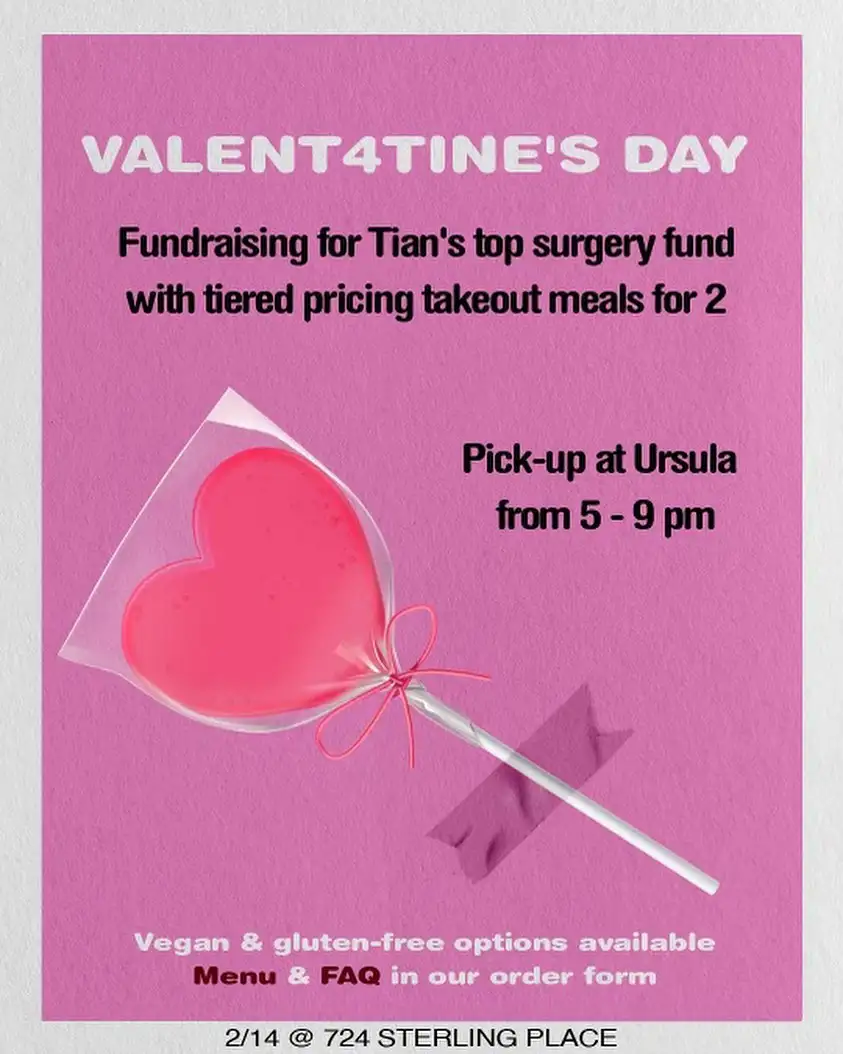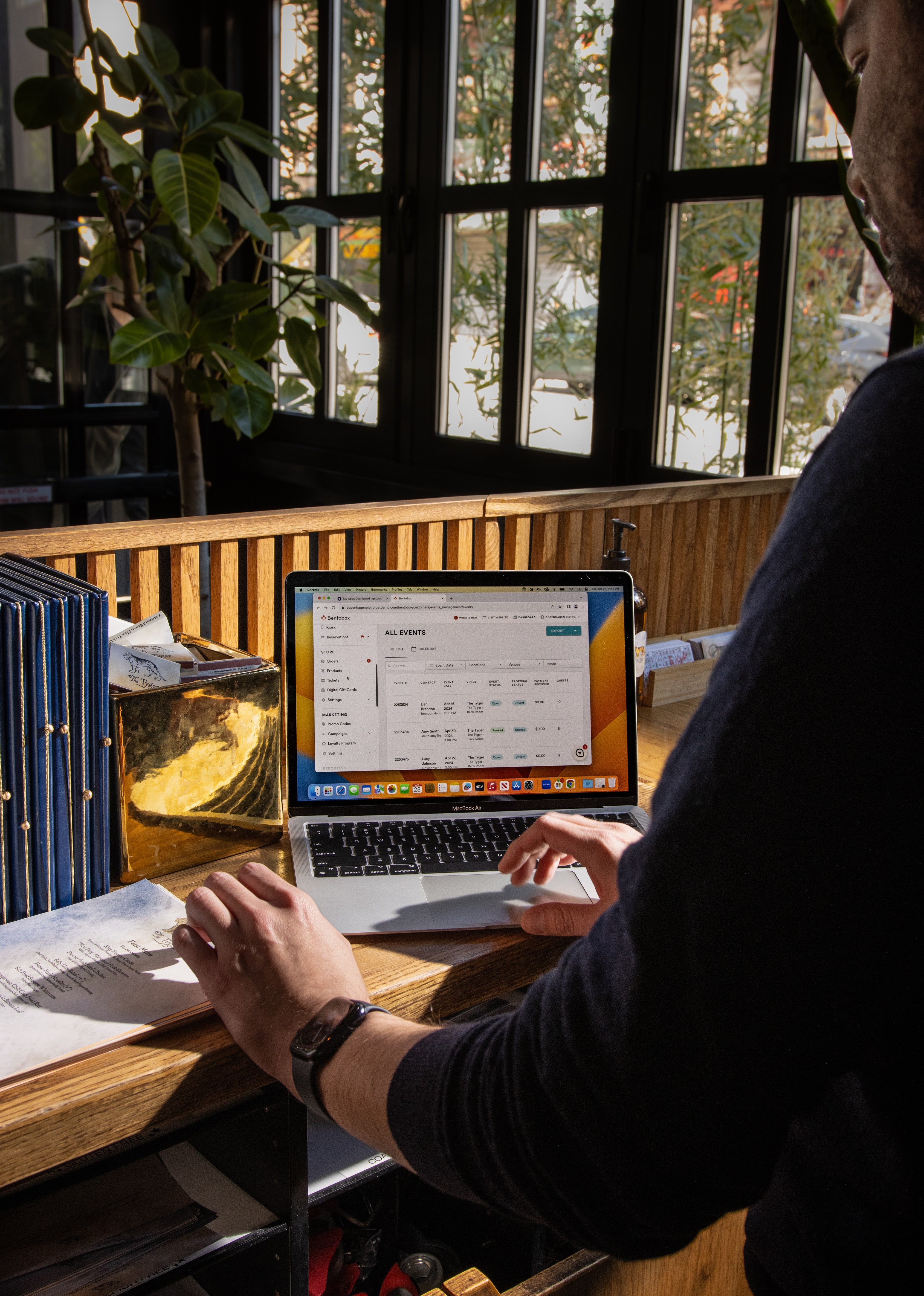Community
Resilience and Transformation: How LGBT+ Restaurants Are Taking Center Stage
June 23, 2023
What a survey of 24 LGBT hospitality businesses says about the current state of queer community spaces.
When we talk about hospitality spaces owned by and serving people in the LGBTQIA+ community, the first thing that typically comes to mind is bars. But what about other types of hospitality business, like restaurants, bakeries, and pop-up brands? What role do they have to play?
More importantly, what challenges do they face?
In 2023, with the rise of the queer food movement, LGBTQIA+ businesses play a role far greater than just serving food. These restaurants joyfully celebrate the vibrant tapestry of queer culture and often become community havens, providing safe spaces and trailblazing representation in their areas. With this representation comes the same set of challenges faced by LGBTQIA+ people everywhere — challenges that demand unwavering resilience.

Photo by @alyssnyc for Maite, NYC. (Via Instagram)
Driven by my passion for LGBTQIA+ restaurants and the impact they have on our community, I wanted to find out more about the challenges their owners face. In collaboration with BentoBox, I conducted an in-depth survey of two dozen LGBTQIA+ hospitality operators in June 2023, asking them: What has been the impact of your business being part of the LGBTQIA+ community?
The answers shed light on the current state of LGBTQIA+ businesses and offer ideas for how we can support them even more.
“I believe in bringing my whole self to my business,” said one respondent, “and I want my staff to do the same.”
As we found out, doing so can have a transformative effect.

BentoBox Marketing & Commerce Platform
Want to stand out online? Let's chat.
Drive revenue directly through your website.
The need for new community spaces
Over the last twenty years, the number of LGBTQIA+ bars in the U.S. fell by 45%. As the role of gay bars has declined, the need persists across the country for LGBTQIA+ folks to have inclusive spaces of our own — especially considering LGBTQIA+ individuals are ten times more likely to be victims of violent hate crime than non-LGBT people. The role restaurants play is becoming crucial to providing this space. As one respondent stated, “We deserve to be whole and visible in everything we do. We deserve space.”

“Other” respondent businesses included bakeries, cafes, and pop-up brands.
LGBTQIA+ restaurants provide that space free from the intensity of bars or clubs. “We need creative social spaces — spaces for us, by us — that de-center alcohol in the LGBT community,” said one cafe owner.
For most LGBTQIA+ hospitality businesses, their role within the fabric of their neighborhood carries a significant sense of pride. It involves “building upon the work of our elders, imagining new futures for food and work, and representing marginalized communities and intersecting identities,” said a restaurant owner.

Half of all respondents’ staff were majority LGBTQIA+.
Stepping into an LGBTQIA+ restaurant, patrons know they are entering a space where they will find friends and allies who share similar experiences and identities. For me, I associate LGBTQIA+ restaurants with the exhilaration of meeting new people and basking in the beauty of the LGBTQIA+ community.
By catering to this essential need, LGBTQIA+ restaurants not only nurture a sense of belonging but also inspire the growth of more LGBTQIA+ businesses. To further emphasize the belief that "rising tides lift all boats," I found that most restaurants go out of their way to support other LGBTQIA+ businesses and brands through collaborations, and make a commitment to allyship with intersecting identities within the community.

Mis Tacones, Portland, OR. (Via Instagram)
The resilience of LGBTQIA+ spaces
Discrimination, of course, remains prevalent in many places and hinders LGBTQIA+ businesses’ ability to thrive. In our survey, one owner of a market and fast casual restaurant reflected on the issue: “With any form of visibility, people from both sides make their feelings known. Generally our customers are very supportive, but there has been targeted harassment, and our team converses daily about safety strategies for our employees and customers.”
Anti-LGBTQIA+ sentiment not only threatens the safety of the staff and patrons, but also introduces financial headwinds. One cafe owner reported: “It's a mixed response. Being openly LGBTQIA+ has invited some of the most wonderful people in, but also we’ve lost business from straight folks.”

Surprisingly, none of the survey’s respondents had been in business for more than six years. Some of the blame goes to COVID, surely, but we also know that LGBTQIA+ businesses had a harder time getting federal loans and financing during the pandemic. It made me wonder: Do LGBTQIA+ businesses have a shorter lifespan than others? If so, is that due to the famously difficult time LGBTQIA+ entrepreneurs have accessing capital?
Given these challenges, I was delighted to see plenty of positive responses from the business operators in our survey, showcasing immense resilience in their efforts to continue serving the community.
“Largely, it's been a warm welcome,” one restaurant owner shared when discussing perceptions within the community.
“We’ve been invited to queer events and patronized by queers!” said a pop-up brand manager.
“Our community so far has been very supportive,” said a bakery owner. “However, we are in Chicago which is more welcoming than other cities.”
How LGBTQIA+ spaces are showing up for the community
Beyond their culinary endeavors, a number of LGBTQIA+ restaurants across the country are going above and beyond to support their communities in meaningful ways.
Pay-What-You-Can (PWYC) initiatives, for example, help prevent monetary barriers from gatekeeping LGBTQIA+ restaurants. “On Sunday, queer and trans individuals dine free,” reported one queer/trans-masculine survey respondent who owns a fast casual restaurant. The trend is prevalent across the LGBTQIA+ community. Mis Tacones in Portland, OR, provides free meals for trans people of color, emphasizing their commitment to creating an accessible space. HAGS in New York City, meanwhile, dedicates Sundays to PWYC dining.
Additionally, LGBTQIA+ restaurants frequently host fundraisers and community-oriented events, encouraging patrons to contribute to causes that directly impact their community. I vividly recall Ursula's, an LGBTQIA+-owned and operated restaurant in Brooklyn, supporting a community member’s top surgery through an event that featured a sliding scale menu for accessibility. Maite is another shining example, by hosting Dyke Beer's Release Party and monthly Queer Vinyl Nights.

Benefit event held by Ursula’s, NYC. (Via Instagram)
The survey results also showcased a dedication to restaurants being a “queer third space” where LGBTQIA+ artists and events take center stage by facilitating an array of activities, such as queer speed dating and queer knitting.
The welcoming aesthetics of these establishments attract enthusiastic support from the community. Maite, for instance, adorns its walls with icons such as Killing Eve’s Jodie Comer and the cast of The L Word, creating an atmosphere where the LGBTQIA+ community feels seen, celebrated, and embraced. By acting as gathering spaces for such activities, LGBTQIA+ restaurants actively curate environments with a shared purpose where people can enjoy a meal and socialize.

HAGS, NYC. (Via Instagram)
Expanding our idea of LGBTQIA+ space
Years ago, I relocated to NYC for work and school. New in town, without any real contacts and looking to make new friends, I pulled out my phone and searched Google Maps for nearby LGBTQIA+ hangout spots. Results popped up, but to my dismay, they were all bars and clubs. There is a time and place for LGBTQIA+ bars, but at that point in my life, I was hoping for a cafe or a daytime spot where I could forge friendships over similar interests and grab a bite to eat.
It was one moment among many in which I wondered why there were not more queer cafes, restaurants, and spaces where the community could convene over food. At the time, it made sense. We didn’t usually, and still don’t, see successful LGBTQIA+ folks in food media as often as we should. This further emphasizes that representation of LGBTQAI+ folks through restaurants and other hospitality ventures is vastly important.
Just this year, I journeyed three hours upstate solely to experience Harana Market. Considering the way we travel long distances in the queer community, it felt familiar, yet exciting.

A visit to Harana Market in Woodstock, NY.
Not only was the food incredible, but I wanted to embrace the unique ambiance and support an LGBTQIA+-owned business. I can’t be the only queer who has traveled solely for this purpose. And it is not the first time or the last time for me. Now in 2023, I feel very lucky to see a world in which LGBTQAI+ folks in food, beverage and hospitality are starting to thrive.
Plain and simple: restaurants are larger community hubs than I think society understands. They overcome barriers and showcase resilience simply by being an openly LGBTQIA+ hospitality business. Outside of their culinary endeavors, they proudly and passionately uplift the multifaceted LGBTQIA+ community, creating a ripple effect of empowerment, inclusivity, and celebration.
To learn more about how you can support queer folks in food, visit @QueerFoodFoundation and QueerFoodFoundation.org
Header photo: Ursula, NYC (Via Instagram)

PRODUCT
Build With BentoBox
Get a beautifully designed website with tools to grow your restaurant.
Recommended

What It's Like: Stories From Hospitality
Chef Silvana on Standing Out and Standing Up For Her Community
June 20, 2023
How the Phoenix chef became an outspoken advocate for Mexican and LGBT communities at a time when Arizona needed one most.

Community
The Power of Restaurant Mentors: Industry Insights & Inspiring Stories
May 10, 2023
How real restaurateurs have grown their careers through community.

National Restaurant Workers Day
“Taking Care of Our Own” with Chris Shepherd
December 9, 2022
Southern Smoke’s founder discusses what he sees as the biggest areas of impact in restaurants, and why he left the industry to focus on helping people full-time.

